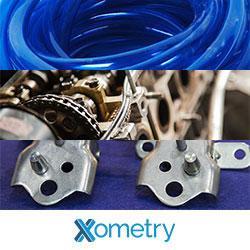How do Consumers View Food Production Technology?
New ISA survey reveals surprising attitudes toward ag innovation
BLOOMINGTON, ILL. Dec. 14, 2018—New technology is becoming more integral to the rural landscape. From satellite imagery and gene editing, to field sensors and autonomous tractors, technology is poised to transform agriculture and food production.
To better understand consumer attitudes toward ag innovation, the Illinois Soybean Association (ISA) checkoff program commissioned a nationwide Confidential Consumer survey of 500 adult consumers. ISA reports its surprising findings in the December issue of Illinois Field & Bean.
Perhaps the most surprising: Consumers dont think technology is as critical to farming as other industries. Less than half of those surveyed believe technology is extremely important to the success of farming and food production. In contrast, 70 percent of consumers think technology is extremely important to healthcare. Education, energy, transportation and finance all ranked higher than farming when it came to the importance of technology.
Consumer views vary
"Although consumers may not fully understand the role technology plays in agriculture, they are surprisingly supportive—but it depends on the technology," says Amy Roady, ISA communications director. "For example, nine out of 10 consumers surveyed support using sensors in fields to gather crop data, and almost none oppose this practice."
Roady adds that consumers support begins to dwindle when they are asked about satellite imagery, nanotechnology and use of robots to plant, tend and harvest crops.
"Only about three-fourths of those surveyed support these technologies in food production and as many as eight percent actually oppose them," she says.
Frame up benefits
The key to public acceptance of ag technology is to frame the story around how it benefits consumers, not just around how it benefits farmers.
The ISA survey showed that consumers most strongly support ag technologies that help protect water quality, reduce food waste and improve food safety. But they are less supportive of technology to increase crop production or enhance farmers profits.
"Although consumers may be skeptical about ag innovation, the good news is that their minds are open," Roady says. "Its up to everyone across the food chain to proactively connect with consumers and communicate the benefits of technologies in ways they will understand and accept—before they start questioning new farming practices."
For more on consumer acceptance of ag innovation, read the full Illinois Field & Bean article at ilsoy.org.
The ISA checkoff and membership programs represent more than 43,000 soybean farmers in Illinois. The checkoff funds market development, soybean production and profitability research, issues management analysis, communications and education. Membership and advocacy efforts support Illinois soybean farmer interests in local areas, Springfield and Washington, D.C. through the Illinois Soybean Growers. ISA programs are designed to ensure Illinois soy is the highest quality, most dependable, sustainable and competitive in the global marketplace. For more information, visit www.ilsoy.org.
Featured Product

Get RFQs on Die Casting, Stamping, and Extrusion With Xometry, Your Source for Custom Parts
Xometry is your source for custom parts. Now, in addition to getting instant quotes on 3D Printing, CNC Machining, Sheet Metal, and Injection Molding, customers can create and send RFQs for die casting, stamping, and extrusion work to our nationwide network of pre-vetted manufacturers with just a 2D drawing. You will receive and be able to review responses from qualified shops within 7 days on an advanced web-based RFQ management platform. To learn more go directly to our site to issue and RFQ today. Stop wasting time managing RFQs through email and by phone, and start issuing RFQs at scale and in the cloud.
